Search for articles or browse our knowledge portal by topic.
Snow/Ice Removal
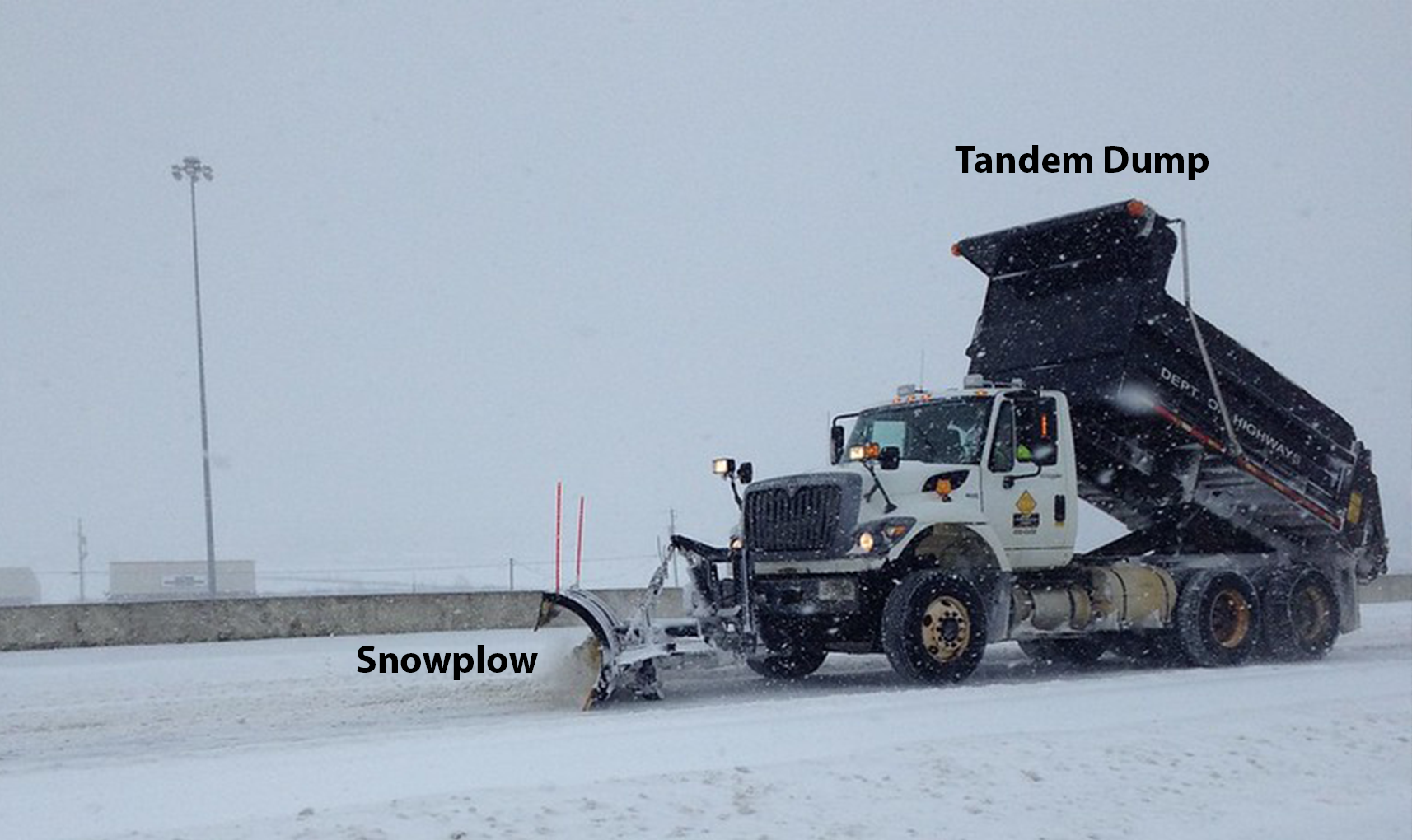
| Equipment Class | Make | Model | # | Link |
|---|---|---|---|---|
| TRUCK 2 1/2 TON FLAT SNOW/ICE | INTERNATIONAL | 7400 SFA 4X2 | 23 | Spec Sheet 7400 SFA 4X2 |
| TRUCK 2 1/2 TON FLAT SNOW/ICE | INTERNATIONAL | 7600 | 1 | Spec Sheet 7600 |
| TRUCK 2 1/2 TON FLAT SNOW/ICE | INTERNATIONAL | 7400 SBA 4X2 | 5 | Spec Sheet 7400 SBA 4X2 |
| TRUCK 2 1/2 TON FLAT SNOW/ICE | GMC | C-8500 | 1 | |
| TRUCK 2 1/2 TON FLAT SNOW/ICE | GMC | C 7500 | 6 | |
They are trucks mounted with a snowplow used for removing snow and ice from outdoor surfaces, typically those serving transportation purposes. A snowplow works by using a blade to push snow to the side to clear it from the surface. Not all trucks can handle carrying a plow. Most transportation agencies use 10-foot, 11-foot, or 12-foot front plows. Using a 14-foot front plow allows one operator to clear one lane in one pass, from the centerline stripe across either edge line stripe. Wider front plows provide tremendous advantages on interstates and expressways because they remove an entire 12-foot lane, eliminating the need for a second round and reducing the exposure time and frequency of exposure between snowplow trucks and traffic. In general, two-lane collector roads (with and without shoulders) and rural interstates can benefit by clearing the entire lane in one pass.
KYTC has three general sizes of trucks that can be fitted with a plow:
- Baby Dump: 1.5 ton fitted with a plow
- Single Axle dump: used on more narrow roadways (about 60% of the tandem axle’s capacity).
- Tandem Axle: used on larger roadways and interstates.
- They are used for removing snow and ice from roadways, structures, ROW, and outdoor surfaces.
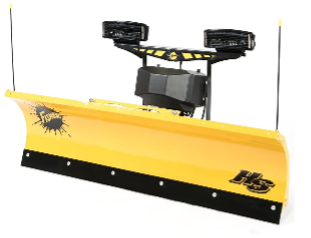
- Straight Plows: This option is great for small-scale applications that don’t involve a ton of snow. Just make sure you pay attention to the plow’s horizontal angle, which controls the snow’s direction when you push it. Blades at the bottom of the plow must be changed out periodically. (refer to the image)
- Chloride Delivery System: Chloride/salt can be delivered either using a tailgate spreader or a V-box. Tailgate salt spreaders can handle any type of material, including bulk salt, sand, and salt/sand mix, while V-box can be used in conjunction with a vibrator to keep material flowing consistently.
- Spreader, chute, and saddle tank are used to spread brine down to 20 degrees or liquid calcium below 20 degrees combined with salt.
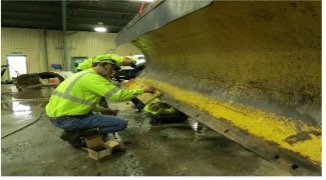
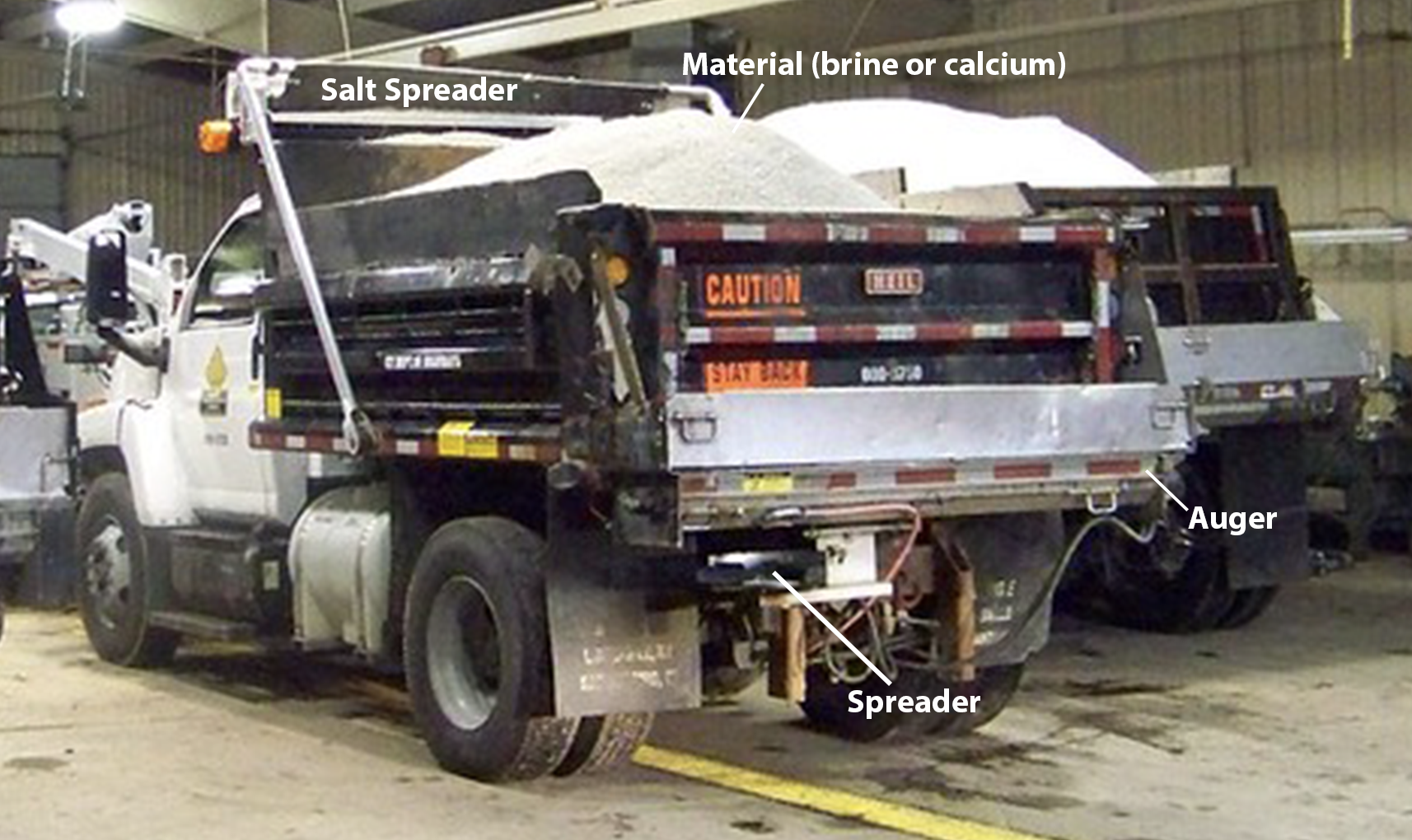
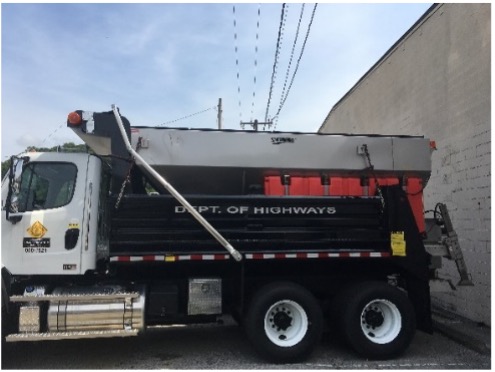
Tandem Dump
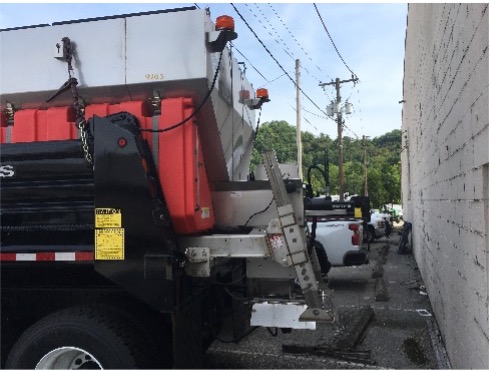
Brine Saddle Bag (V-Bed Spreader)
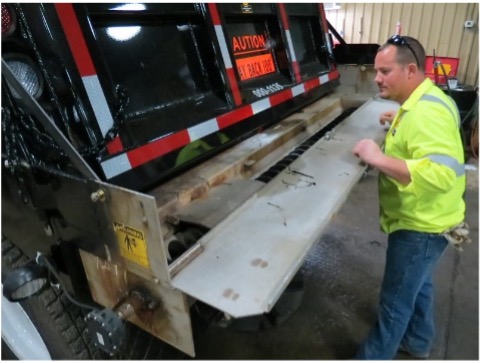
Tailgate Spreader (with auger)
Advantages of Using the auger system:
- The auger allows a more even flow and spread of material
- The auger is capable of breaking up big chunks of salt, allowing them to process and spread
Maintenance Facilities (like the one in the background of the photos below) are equipped with a shed that contains a tub used to mix salt and water to create a “brine,” which is then stored in stationary tanks. Before a weather event, mobile tanks are loaded with the brine applied to the roadway as a pre-treating measure to prevent winter material bonding to the pavement. Brine tanks can be mounted to a trailer or loaded into a truck’s bed via a loader w/ fork.
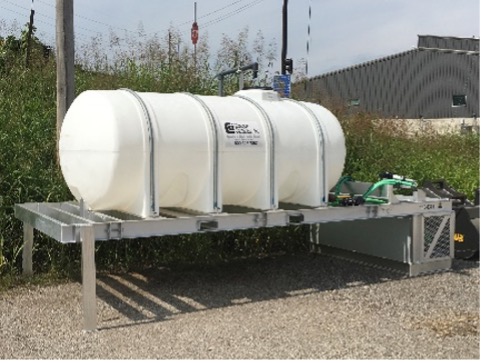
Salt brine Spray Tank (for dump truck bed)
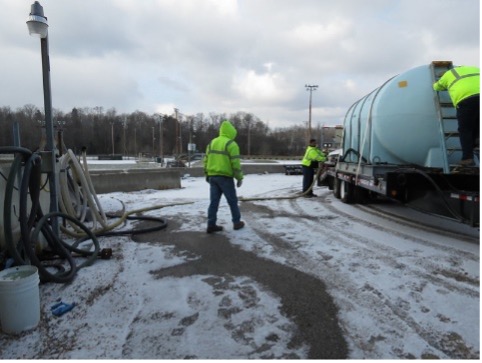
Brine unit used for pre-treating before snow begins
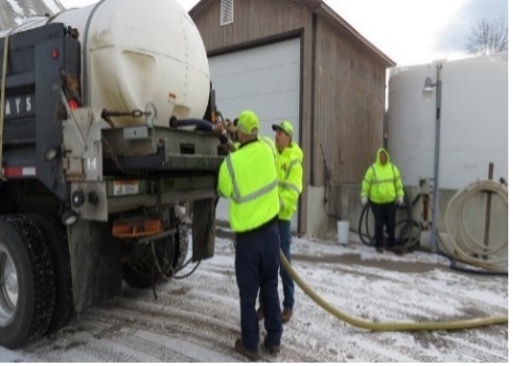
Brine loading into the truck-mounted tank
- A salt elevator is used to store the salt in a separated salt storage facility (refer to the below picture). The salt elevator facilitates the maximum angle of repose and allows for maximum storage capacity.
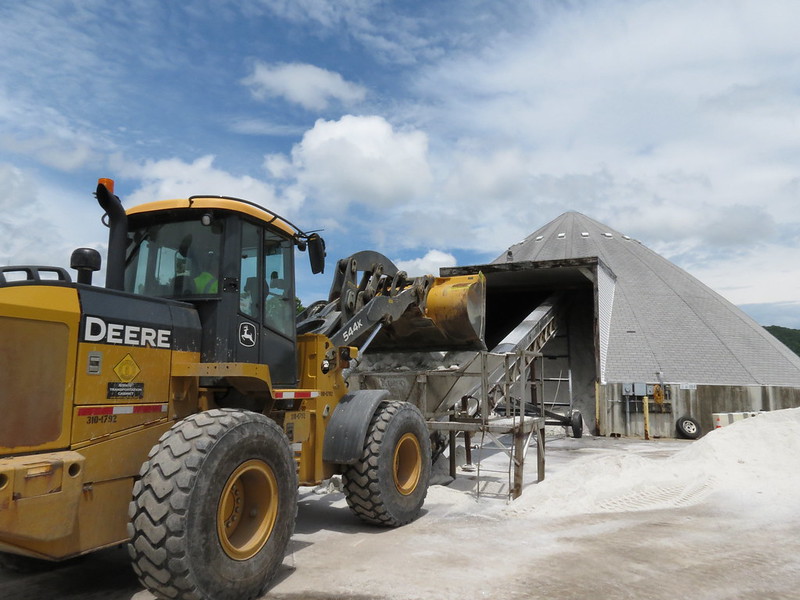
- Snow or debris clearing
- Maintaining control at all times
- Avoiding obstacles
- Avoiding conditions that might cause the equipment to tip over
- Working up or down hills versus along the slope
- A daily or walk-around inspection should be done before starting the equipment to begin work.
- Check for worn, broken, damaged, and missing components.
- Check all fluid levels and top off any low fluids.
- Always set the parking brake when leaving the equipment unattended.
- Operate the equipment with caution when on uneven terrain.
- Always check the blind spots of the equipment.
- Always wear proper PPE while operating the equipment.
- Keep up with the preventative maintenance and upkeep of a truck.
Heavy Equipment Knowledge Book:
Access the complete Knowledge Book here: Heavy Equipment Knowledge Book
Next Article: Tractor Mounted Mowers
Previous Article: Skid Steer

